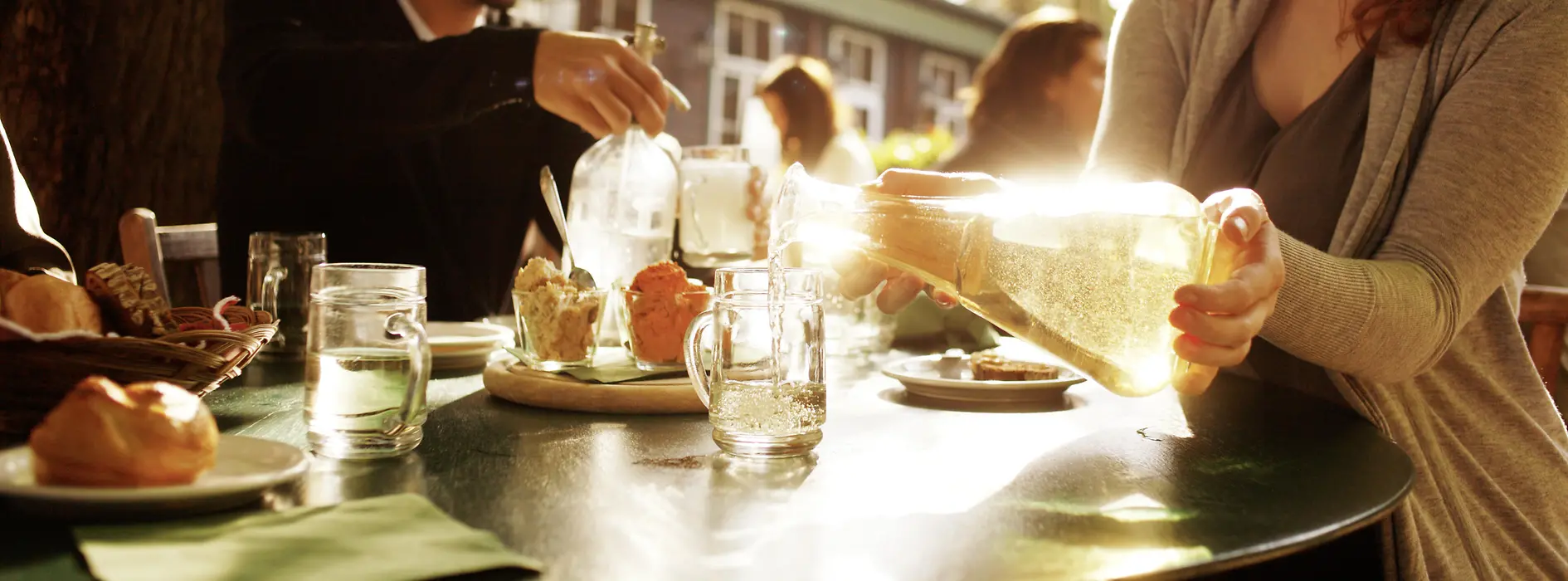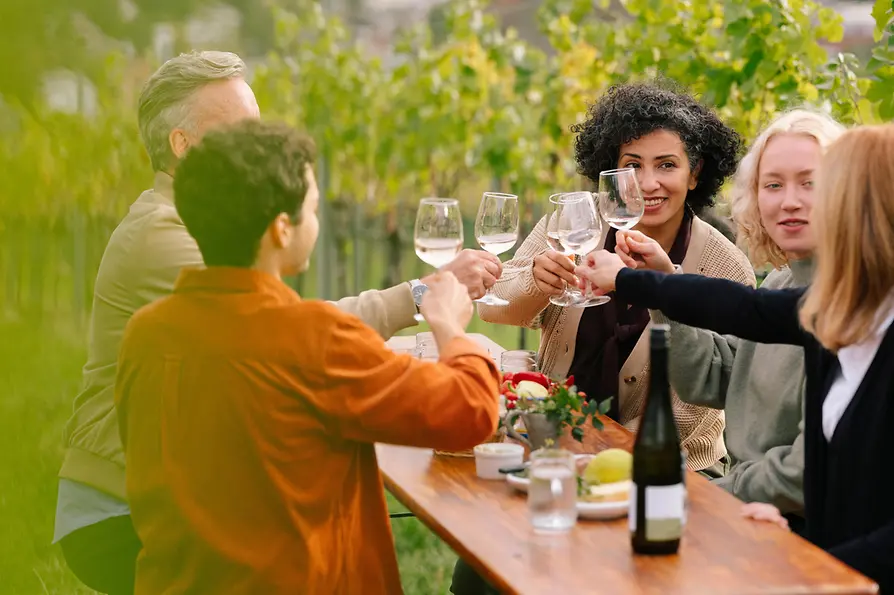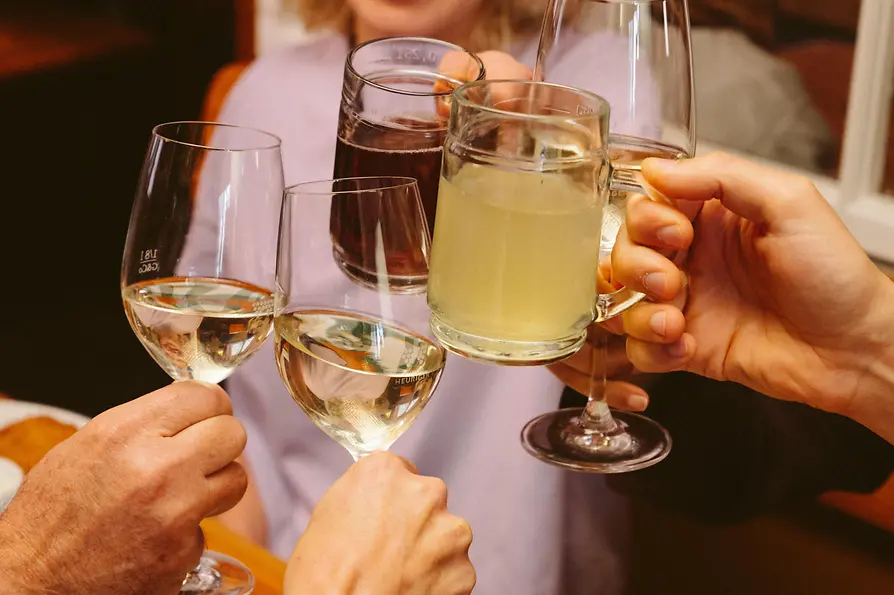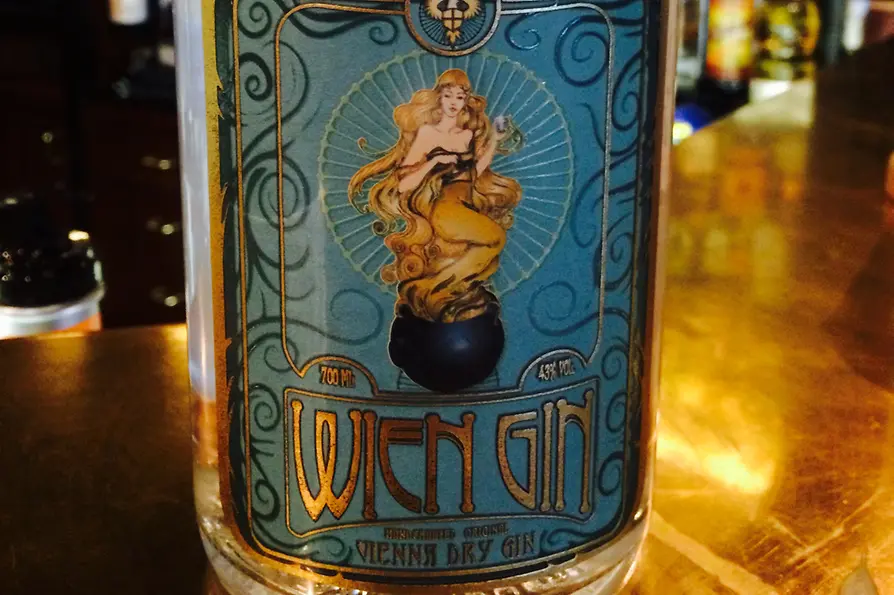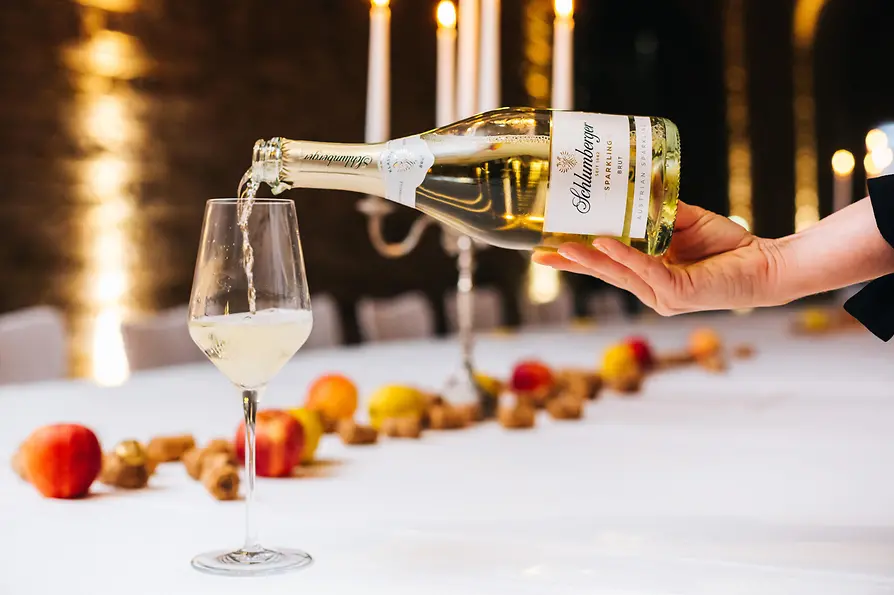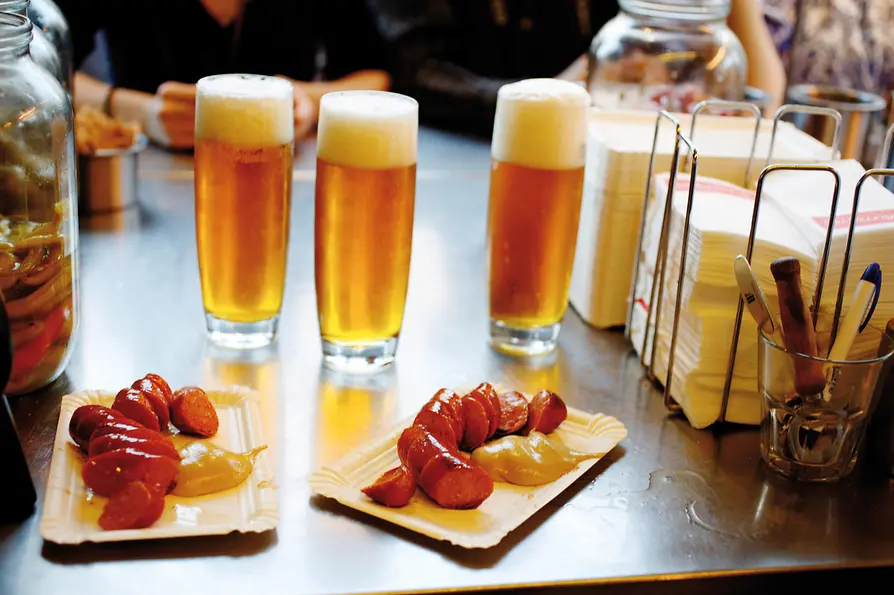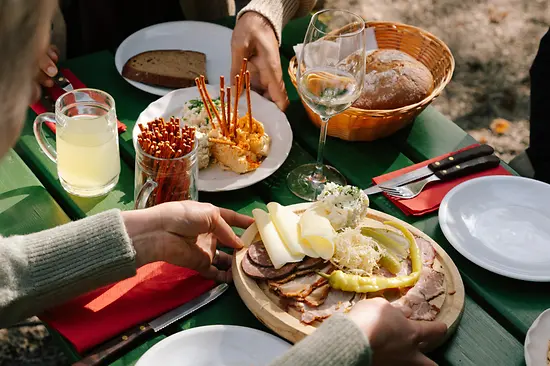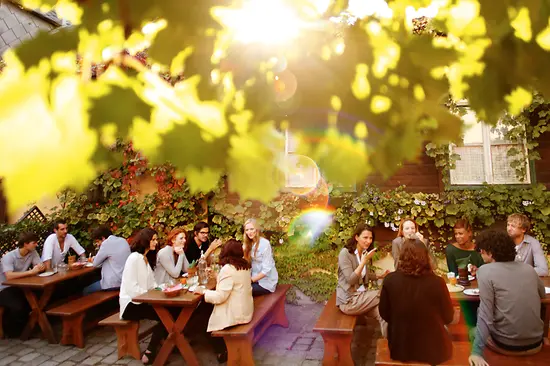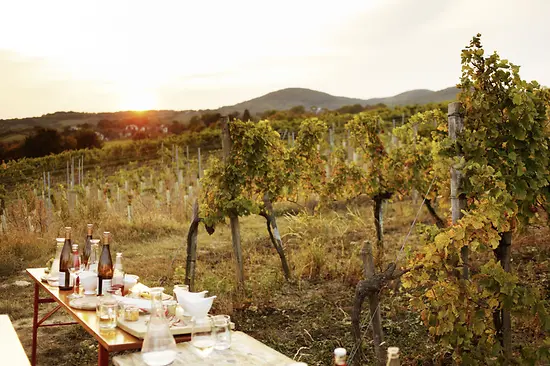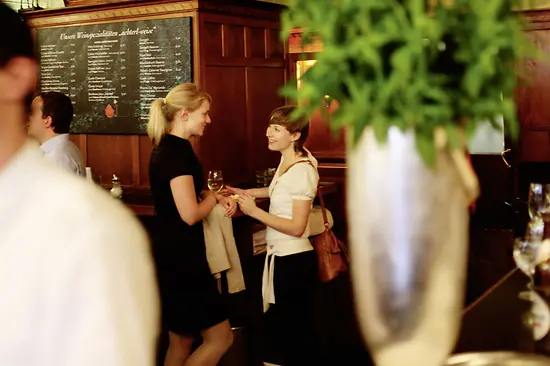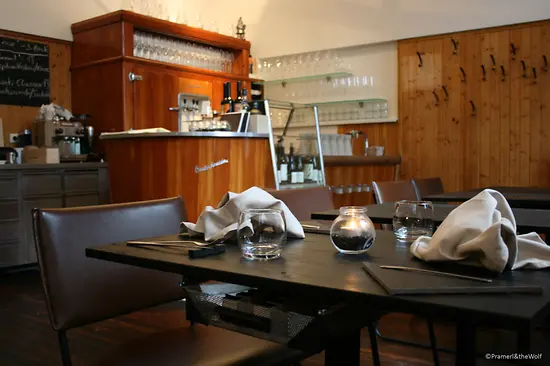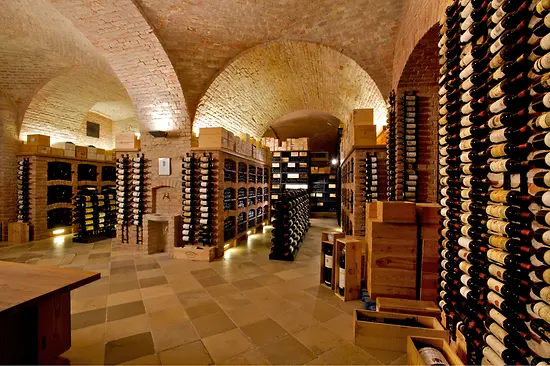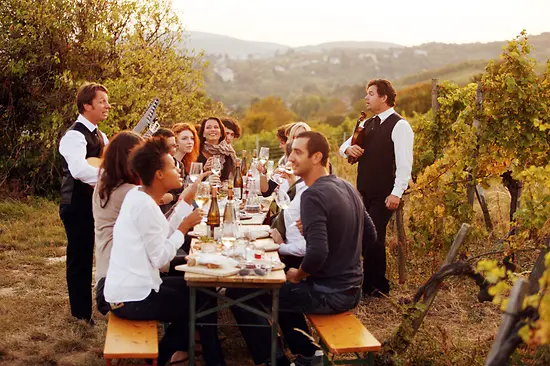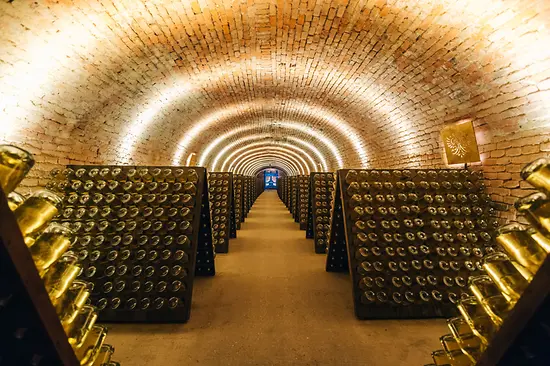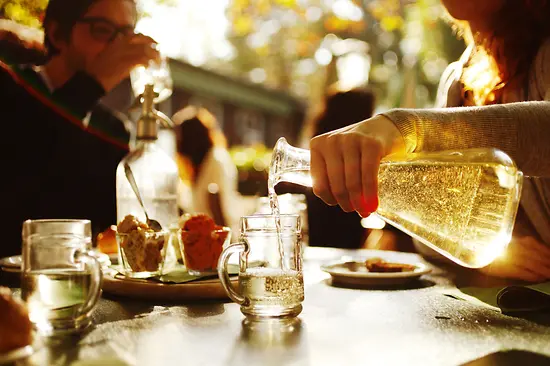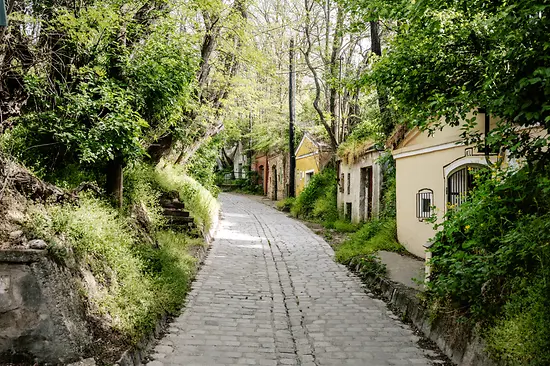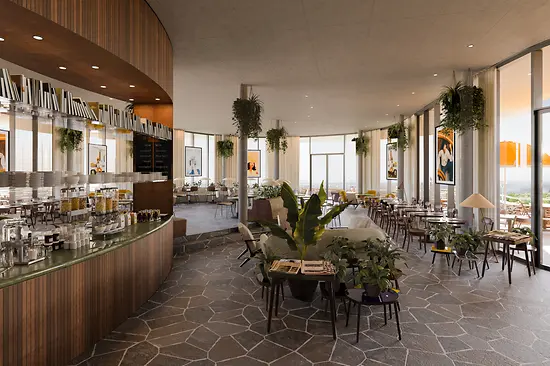Vienna by the Glass: Drinks from Vienna
Viennese Wine
Vienna’s calling card – and the best known and the most popular beverage for many. The ancient Celts and Romans are reputed to have planted vineyards here. And today, Vienna is the only capital city in the world with extensive vineyards within the city limits. Its 600 hectares of land under vine produce around 2.4 million liters of wine each year. Incidentally, 85% of this is given over to white wine. Particularly popular varieties: Grüner Veltliner, Riesling, Pinot Blanc, Chardonnay, and a real specialty: the Wiener Gemischter Satz. This wine is composed of at least three grape varieties that are grown, harvested, and turned into wine together. Once seen as something of a poor cousin to the other varieties, this specialty is now DAC classified and a bearer of the prestigious Presidio seal.
About half of the wine comes from the hilly northwest of the city, with the remainder sourced from traditional winegrowing areas north of the Danube and in the south of Vienna. By the way, the capital’s smallest vineyard can be found right in the heart of the city, on Schwarzenbergplatz. But where is Viennese wine best enjoyed? Where it is grown, of course – in any of the roughly one hundred Heuriger wine taverns in the city that serve wine from their own vineyards. Here, you can also enjoy cold and hot culinary specialties in a convivial rustic ambience. A post-meal Stamperl, i.e. a shot of schnapps, can also be ordered as a digestif if required. Mostly different kinds of fruit schnapps. Anyone looking for a particularly refreshing option – whether at a wine tavern or elsewhere – should ask for a “Weisser Spritzer”, which is half white wine, half carbonated water. A drink that is as much a part of the look and feel of Vienna as St. Stephen’s Cathedral and the Giant Ferris Wheel.
Increasingly popular, juice from freshly harvested and pressed grapes provides a great non-alcoholic option. In fact, there is a clear trend towards premium-quality grape juice, with Vienna being the first Austrian province to introduce a quality seal for the drink. Excellent Viennese Grape Juice – as determined by expert juries – only contains grapes from Viennese vineyards.
Storm
As summer draws to a close, storm season begins in Vienna. But don’t worry: the skies are not about to cloud over, because storm is grape juice that has just begun to ferment, right on the cusp of turning into wine. Known here as Sturm, in Germany it is simply called Neuer Wein. Available in white, red and rosé, Sturm must have at least one percent alcohol by volume. An autumnal stroll through Vienna’s vineyards soon reveals that almost all of the wine taverns serve Sturm. And even in the city center, it can be found on just about every corner. A small pointer when it comes to storm-drinking etiquette: it should be held in the left hand, and toasted with “Mahlzeit!” instead of “Prost”, without clinking glasses.
Gin
A few years ago, gin started to conquer bars and living rooms all over the world. And interest in this clear spirit, made from juniper berries and infused with fragrant botanicals, remains undiminished in Vienna, too. But gin is not only drunk in the city; it is also made here. More and more distilleries are springing up all the time. Klimt and other familiar motifs adorn the bottles of Wien Gin. Vienna Craft Distillery and Munakra Gin have also made a name for themselves. And a short time ago, Vienna Distiller started offering tastings at a particularly prestigious location: the Spanish Riding School.
Vienna is also home to recent award winner Alexandra Ghuneim, who runs the HabibiDryGin label and is considered the most successful solo female distiller. Incidentally, the experts say that while gin does not always need a mixer, it definitely should not be drunk on the rocks. Still, G&T remains the most popular choice: the classic gin and tonic.
Vermouth
Vermouth has been similarly on trend these past few years, although it has been around forever: in ancient Egypt and Greece, wine was mixed with herbs. As with wine, there are white, red, and rosé varieties. An uncomplicated option, it is popular as an aperitif. And with an alcohol content of below 22 percent, vermouth is not too strong either. The longest-established Viennese vermouth has been around since 1891. Made by Burschik, it is named “Vermouth” rather than the usual German signifier “Wermuth”. Tastings and guided tours are available at the company’s lounge just behind Vienna’s Westbahnhof station.
Vermouth owes much of its popularity to cocktails such as Martini and Negroni, the second of which is also available in a Viennese variant: mix Burschik’s Vermouth Red, Wien Gin, and Wiener Dirndl (a liqueur made from cornelian cherries), also produced here, in equal proportions. And there you have it: a “Negroni, Oida!”
Even More Spirits and Liqueurs
But Vienna has even more to offer, including a number of products that people would not immediately associate with the city. Kalê is an aromatic herbal liqueur, which is either served on its own or as a mixed drink – variants include Kalê Spritz and Kalê Sour. But it wouldn’t be Vienna if coffee didn’t find its way into those shot glasses somehow: Wiener Mocca from the Naber coffee roastery is a strong coffee liqueur.
Under a cooperation with Manner, Alt Wiener Schnapsmuseum GmbH produces cream liqueurs in various flavors – including chocolate bananas and Neapolitan wafers. And for anyone who prefers things a little stronger, the traditional Meidling-based Viennese distillery also produces various absinthes.
Sparkling Wine
When there is something to celebrate, the Viennese love to raise a toast with a glass of sparkling wine. Here, too, they have the pick of numerous varieties that are deeply rooted in the city. An upgrade of wine, sparkling wine, or Sekt to use its German name, is produced in Vienna by numerous vintners as well as a number of genuine pioneers in the field. Schlumberger, which now also owns Viennese brand Hochriegl, was founded in 1842, making it the oldest sparkling wine producer in Austria.
Kattus, a former imperial and royal warrant holder, also has an illustrious history. It is said that Emperor Franz Joseph treated himself to a bottle of Kattus every Sunday. Well worth a look, both companies’ nineteenth-district cellars are open to the public. Sekt enjoys an enduring popularity: according to the Sektreport, nine out of ten Austrians indulge in a glass from time to time. And more and more people are also turning to the various non-alcoholic varieties.
Beer
Vienna’s history with beer is even longer: the city was a brewing hotspot from the Middle Ages all the way through until the nineteenth century. Today, only one major brewer remains: Ottakringer. Its brewery in the sixteenth district doubles up as a popular event and party location. A can of Ottakringer beer is known in Viennese dialect as a “Sechzehner-Blech” – with “Sechzehn” (sixteen) denoting the district and “Blech” (tin) referencing the cans. Give it a try at a sausage stand. Great-tasting Viennese beer can also be enjoyed at one of the 15 or so pubs dotted across the city that brew their own. The young Viennese brewing scene is constantly giving rise to new craft beers. Radler – beer mixed with soft drinks like lemonade, or even with carbonated water – is also very popular in Vienna. Beer, by the way, comes in three sizes: a Pfiff (125ml), a Seidl (300ml), or a Krügerl (500ml).
Wienliebe (Vienna Love)
A cocktail that tastes like Vienna, developed exclusively for us by Isabella Lombardo, bartender at Lvdwig Bar
- 5 cl Wiener Blut Gin
- 3 cl homemade elderflower cordial
- 2 cl Sissi Wiener Wermut
- 1 cl Supasawa
- 0.5 cl Gegenbauer blueberry vinegar
Stir all ingredients in a mixing glass and mix well. Then serve garnished with a few blueberries and a slice of lemon peel. Serve in any type of glass, depending on the size of serving desired.
Text: Maria Schaller
